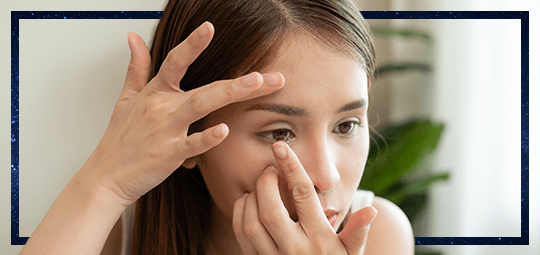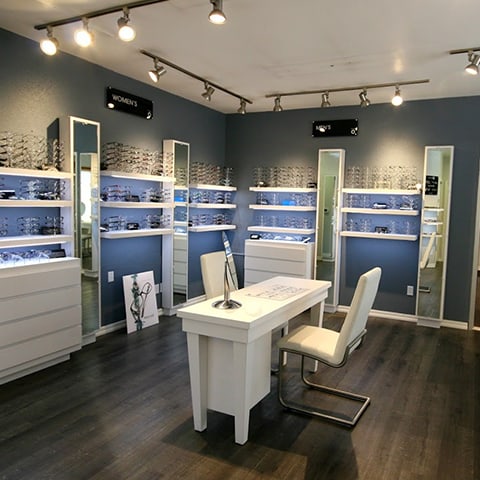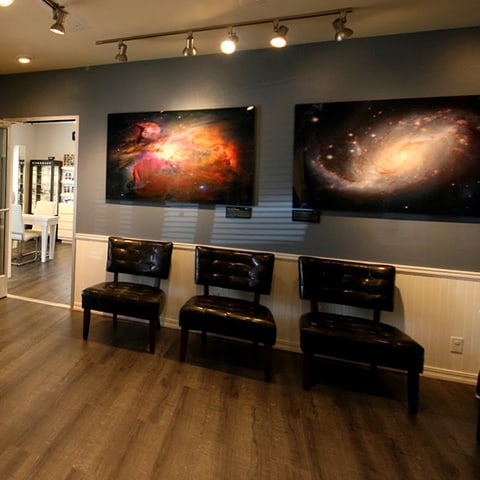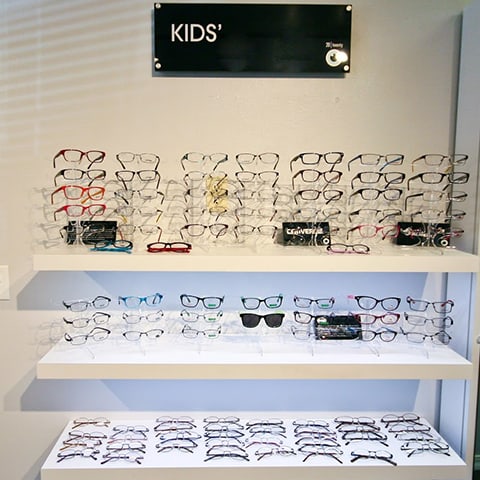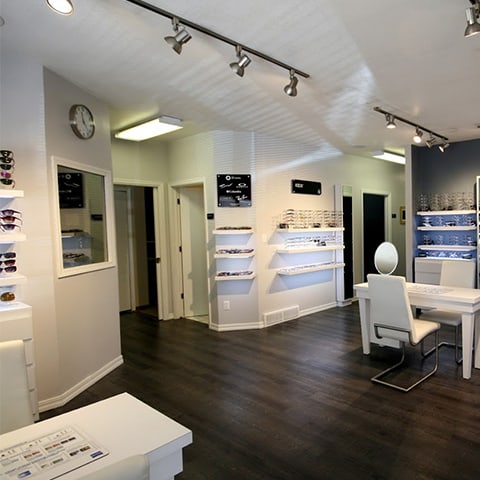Dry Eye Disease: Relief for Gritty, Tired Eyes
Dry eye syndrome is a complex condition that occurs when your eyes don’t produce enough tears or when the tears evaporate too quickly. Symptoms can vary widely, often causing discomfort, redness, and irritation—issues that can impact your daily life.
Everyone’s experience with dry eye is different, so understanding the specific causes of your symptoms is crucial. A thorough evaluation helps us personalize your treatment plan for more effective relief.
You might be surprised that effective, long-term solutions go beyond over-the-counter eye drops! At 20/twenty Optical, we’re committed to improving your comfort and eye health. Visit us today to get started!
Request AppointmentWhat Causes Dry Eye?
Dry is multifactorial, meaning many factors can contribute to its development. Some common causes include aging, certain medical conditions like autoimmune diseases or hormonal imbalances, environmental factors such as dry or windy climates, and digital screen use.
Certain medications can also contribute to dry eye symptoms, including antihistamines and antidepressants.
The Tear Film: Your Source of Eye Comfort
The tear film is a thin layer of fluid covering the eye. It’s vital for keeping your eye healthy by providing lubrication, nutrients, and protection against infection.
The tear film contains 3 essential layers.
Oil
The oily layer is the outermost layer of the tear film and is produced by the meibomian glands, located along the edges of your eyelids. These tiny glands secrete lipids (fats) that form this crucial layer. The oily layer slows tear evaporation, maintains moisture, and provides a smooth surface for the eyes.
Water
The watery layer of the tear film is the middle layer, produced by the lacrimal glands located above the outer corners of your eyelids. This layer is primarily composed of water, electrolytes, and proteins. It hydrates the eye’s surface, washes away irritants, and delivers essential nutrients to the cornea.
Mucus
The mucus layer is the innermost layer of the tear film. Produced by specialized cells in the conjunctiva (the membrane covering the white part of your eye), this layer helps keep the entire tear film adhered to the eye while spreading it evenly across the surface.
Types of Dry Eye Disease
While many causes contribute to dry eye, there are essentially 2 main types:
Evaporative Dry Eye
Evaporative dry eye occurs when tears evaporate too quickly, often due to a lack of oil in the tear film. It’s commonly caused by meibomian gland dysfunction (MGD), where the glands become clogged or blocked.
Relief options include warm compresses, eyelid massage, omega-3 supplements, and prescription medications to boost oil production.
Aqueous-Deficient Dry Eye
Aqueous-deficient dry eye occurs when the eyes don’t produce enough tears to adequately hydrate your eyes.
You may experience this condition temporarily due to dehydration or reduced blinking (like when working on a computer or playing video games). But it can also be a long-term issue caused by certain medical conditions, such as blepharitis (a chronic inflammation of the eyelids) and vitamin A deficiency.
To provide relief, we may recommend prescription eye drops to increase tear production or other treatments designed to keep your eyes healthy, comfortable, and prevent vision problems.
The Role of Meibomian Gland Dysfunction
Meibomian gland dysfunction (MGD) is a common condition that occurs when the meibomian glands become blocked or inflamed, preventing them from secreting the essential oil for your tear film.
MGD can cause uncomfortable symptoms like dryness, irritation, and blurred vision, but it can also lead to more serious issues, such as corneal damage and blepharitis. Dry eye can become a cycle in which blepharitis can worsen MGD, and MGD can contribute to the development of blepharitis.
What Is Common Dry Eye?
Common dry eye refers to mild dryness and discomfort that occurs occasionally—often due to environmental factors. Unlike chronic dry eye disease with persistent symptoms, common dry eye is typically temporary and less severe.
Symptoms
Symptoms of common dry eye include:
- Mild irritation
- Occasional dryness
- Temporary blurred vision
- Discomfort after eye-heavy activities
These symptoms often subside when the eyes are given a break from activities that strain them or when environmental factors change.
Causes
Several different factors can contribute to common dry eye, including:
- Dry air
- Prolonged screen use
- Windy conditions
- Contact lens wear
- Dehydration
Providing You Relief
Whether you have chronic or temporary dry eyes, there are several ways to find relief and manage your symptoms. Our holistic approach focuses on immediate and long-term eye comfort and overall health.
Nutrition
We recommend eating leafy greens, vitamin A and C-rich foods like carrots, nuts, and seeds for healthy fats. Staying adequately hydrated can also help mitigate dry eye symptoms.
Warm Compresses
Warm compresses can help unclog oil glands and promote tear production. You can use a warm washcloth or purchase a specialized eye mask for this purpose.
Omega-3 Supplements
Omega-3 fatty acids have anti-inflammatory properties and can help reduce dry eye symptoms. Consider adding a high-quality supplement to your daily routine.
Lifestyle Adjustments
Making simple lifestyle changes can help relieve dry eye symptoms. Consider the following tips:
- Take regular breaks from screens
- Use humidifiers to add moisture to the air
- Practice good eyelid hygiene
- Avoid smoke and windy conditions
Find the Support You Need Today
Finding an effective therapy for dry eye can help improve your comfort and quality of life. We’re here to help you find relief with several management options.
Contact us today to request an appointment and start your journey to healthier, more comfortable eyes!
Request AppointmentVisit Our Location
You can find us on the corner of East 21st Street and Blue Mesa Court, just a block away from Banner Mckee Medical Center.

Our Address
- 2020 Blue Mesa Ct.
- Loveland, CO 80538
Contact Us
- Phone: 970-663-4800
Clinic Hours
- Monday: 8:00 AM – 5:00 PM
- Tuesday: 8:00 AM – 5:00 PM
- Wednesday: 9:00 AM – 5:00 PM
- Thursday: 8:00 AM – 5:00 PM
- Friday: 8:00 AM – 3:00 PM
- Saturday: Closed
- Sunday: Closed

Our Brands











